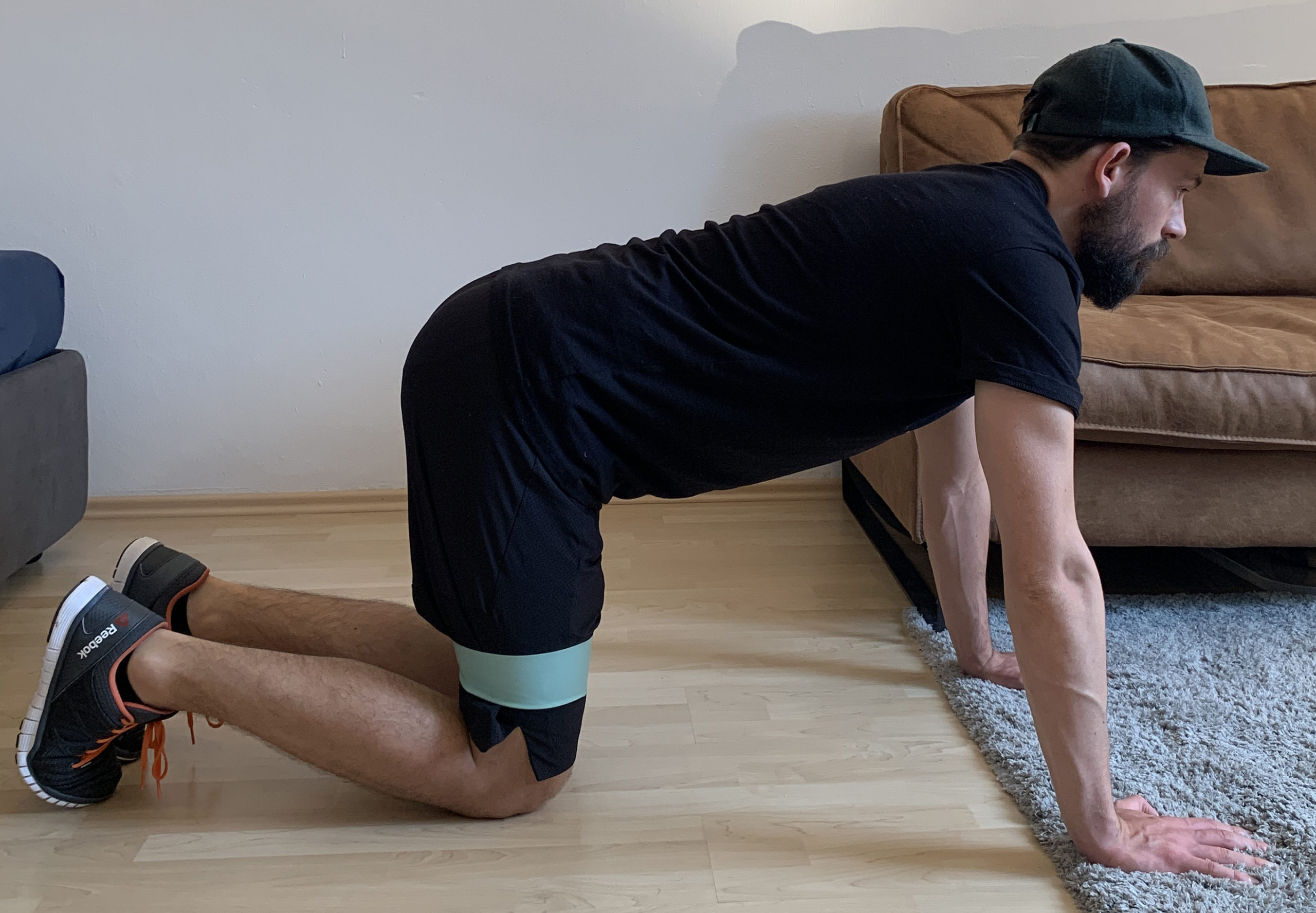The Fire Hydrant is a great exercise that isolates your glutes. Basically all the work is done by your glutes. This exercise has a couple of names – Fire Hydrant, Clamshells, Clams – don’t be confused, essentially the difference is very small and is in the body position while performing the exercise.
In this article I will show how to perform a correct Fire Hydrant with resistance bands. You will also learn what common mistakes to avoid and how to make this exercise more challenging. The second part of the article is about variations – I will cover how to do the Fire Hydrant standing and lying down – the lying version is also called Clamshells.
Fire Hydrant (Clamshells) With Resistance Band
Doing the Fire Hydrant (Clamshells) with a resistance band will give you several advantages:
- Train Your Glutes! Without weight (unless you’re just starting out), the Fire Hydrant (Clamshells) is a simple movement that is not really challenging. Resistance Bands will turn this simple exercise into a great movement to build your glutes.
- Joint Friendly! Using resistance bands will make sure that this exercise will put less stress on your joints compared to machine work or using free weights.
There are also more reasons to favor resistance bands over traditional free weights or machine training, like getting more peak contraction and many more. But we’re talking here about doing Fire Hydrants, so if you’re interested in background info about what benefits resistance bands have, check it out here.
How To Do Fire Hydrant The Right Way
The best way to do this exercise is by using mini bands. Regular loop bands are simply too long. So grab your mini band and place it around both legs slightly above your knees. Now get down on all 4 and place your hands directly under your shoulder. Your knees should be right below your hips.
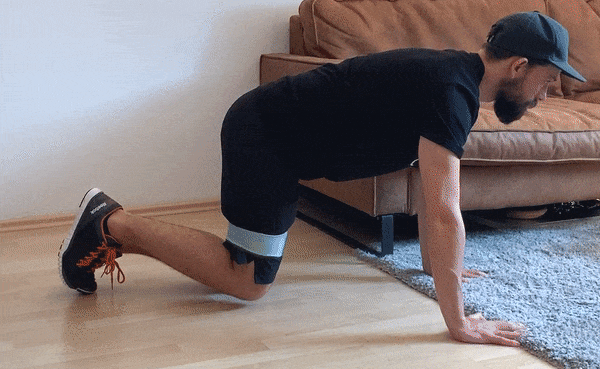
The important thing here is to have a straight back and no arch. Do this by contracting your core and flexing your hips forward. Many people start sticking their butt out and creating a lot of stress on the hips and the lower back because they think it will make this exercise more challenging, but it will only raise the risk of injuries.
Now you will rotate one of your legs outwards until it is parallel to the floor. If you don’t have the flexibility to reach that level, don’t worry about it. Simply lift the leg as high as it is possible.
A recap the exercise in 4 steps:
- Put a mini band right above your knees
- Get on the floor with your arms directly under your shoulder and your knees below your hips in about 90-degree angle
- Now lift one leg to the side until it is parallel to the ground (or almost at least)
- Hold this top position for about 1 second before lowering your leg back down
Important Do’s & Don’ts!!!
⓵ Straight Back – Keep your back straight and your core engaged. This will make sure that you prevent stress on your lower back, and you also will keep a stable position.
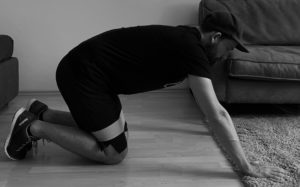
⓶ Knees Below Hips – Focus on keeping your knees stationary beneath your hips throughout the whole movement. Don’t start bringing your hips forward or back. It might make the exercise easier, but you won’t use only glute muscles.
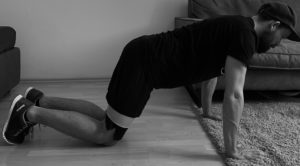
Also keep your arms straight and your head in a fixed, neutral position.
One more important thing. Fire hydrants are rather great as a warm up or a finisher exercise. It can work as your main glute exercise, but it is not perfect, due to the reason that you won’t be able to go very heavy. Glutes are a very big and string muscle, and they need lots of resistance to get enough stimulus to grow and get stronger.
Exercises you should definitely check out and try that are better suited to be your main glute exercise are:
Also check out our 5 Best Glute Exercises With Resistance Bands article for more inspiration for glute work!

We have the best workout plan for resistance band training out there - and you can get it for free!Answer the 4 questions below and we send it to you, no strings attached!
Alternative Ways To Do Fire Hydrant With Resistance Bands
Now let’s dive into alternative ways to perform the fire hydrant. It is a great way to spice up your training and get some variation in to it. Also, every body is different and some movements can feel amazing for one person and for some it is very uncomfortable. I’m sure that one of the variations will be perfect for you.
Standing Fire Hydrant – this variation will help you to keep a straighter back, since you will be ab to be more upright while going through the movement. Find something where you can put your hands on. A sofa or a cupboard are perfect. Now engage your core and lift one leg to the side until you feel a contraction in your glutes. Hold for one second and lower your leg slowly to the starting position.
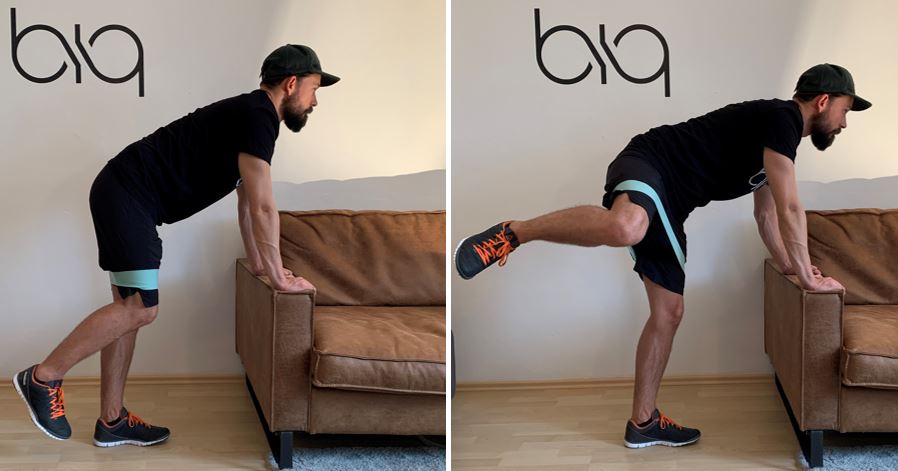
Clamshells – Clamshells are the lying down variation of the fire hydrant. It is perfect if you have difficulty with stabilizing yourself when being on all 4 or standing. In this variation your core has to work much less compared to the other 2 variations shown in this article.
Place the mini band around both of your legs, slightly above your knees. Lay down on the side. Place one foot on top of the other. Now rotate your upper leg outwards until you feel a great contraction in your glutes. Hold there for a short while and lower your knee back towards the other knee. Make sure to do it slowly to reap all the results.
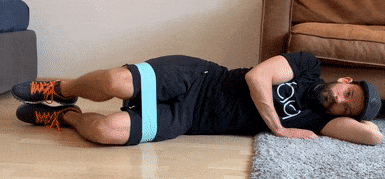
Adding More Resistance
The problem with the short resistance bands is that it’s almost impossible to add more resistance. Once you feel that the current resistance band is not giving you enough resistance to work your glutes anymore, you need to take the next stronger one. The problem is that the stronger one might be too much and promote bad form or won’t let you do enough reps to really work your booty.
Double Time – A great workaround is to simply get a lighter one and add this to the one you are using. With this trick you can only add a small amount of resistance without going overboard and promote bad form.
Time Under Tension – compared to weights where you have the same force applied to any position of the movement, bands will add more resistance the further you stretch them – this will lower the time under tension your muscle has during a set in the starting position. Focus on doing the exercise controlled and try to hold it for a second or two in the fully contracted position and don’t let the band snap back but slowly go back to the starting position.


